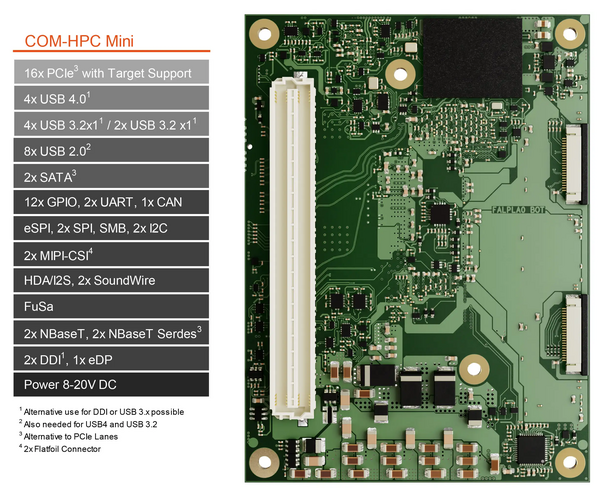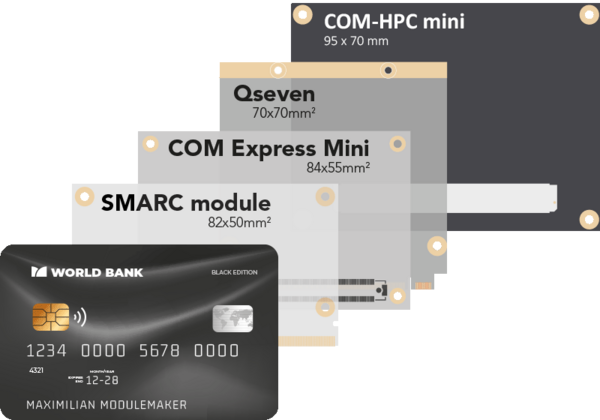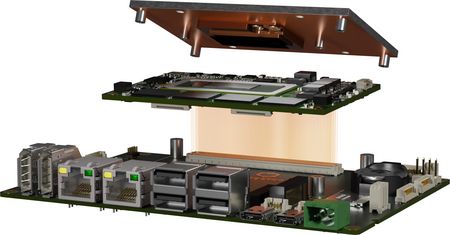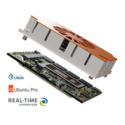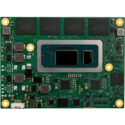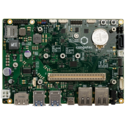
COM-HPC-mini
This COM-HPC standard provides
highest performance to
small form factor designs
COM-HPC Mini – maximum performance on a mini form factor
The high-end PICMG standard for credit-card-sized Computer-on-Modules
COM-HPC Mini has been developed with the aim of delivering the smallest high-performance standardized module currently possible. It follows the highly successful COM HPC Client and Server standards that are specifically designed to deliver extreme computing performance and interface bandwidth to demanding edge applications. COM-HPC Mini brings these features to Small Form Factor (SFF) designs. It is positioned on top of comparable SFF standards, such as COM Express Mini, and provides future oriented applications that face space constraints and power limitations with an unprecedented level of IO and computing power.
The features at a glance
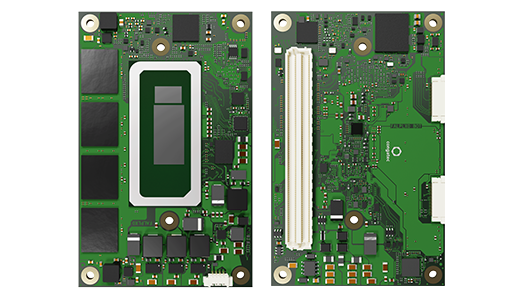
Small Form Factor (SFF) dimension
Based on the COM-HPC Client specification and measuring just 95 mm x 70 mm, COM-HPC Mini has a significantly smaller footprint than COM-HPC Client Size A. As such COM-HPC Mini extends the usage model of COM-HPC Client to applications that previously could not been addressed due to size restrictions. Minimizing the form factor required slight changes to the interfacing, so COM-HPC Mini modules are not compatible to the Client and Server specifications. The most significant change is the use of just one high-speed connector instead of two. This connector also comes with a different pinout to provide an optimized feature set. So, with 400 signal pins, COM-HPC Mini can transfer the full range of latest high-bandwidth interfaces – including fully featured USB 4.0, Thunderbolt, PCIe Gen4/5 as well as 10 Gbit/s Ethernet and much more.
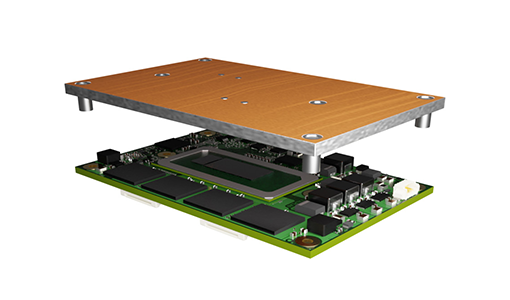
Targeting high-performance designs
Compared to COM-HPC Client, the specified maximum heat dissipation of the Mini standard is also reduced. Yet the maximum power consumption of up to 76 Watts offers ample headroom for performance-oriented processors. This enables COM-HPC Mini to provide SFF designs with unprecedented performance levels as delivered by the latest multicore processor technologies. A good example are Intel Core processors, which will become a natural choice for this new form factor.
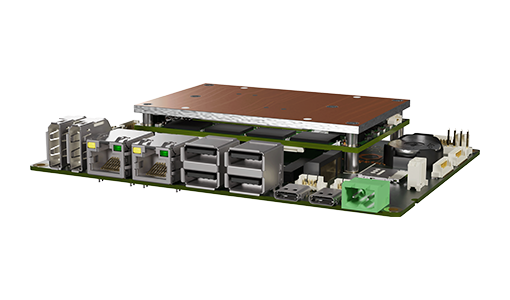
Rugged by design
Another change affects the overall construction height of the module and heatspreader design, which is now 5 mm lower. Consequently, module and heatspreader require only 15 mm above the carrier surface instead of 20 mm as with the other COM-HPC specifications. This allows for very slim designs as required in mobile handheld devices or panel PCs. In order to stay within the height limit, COM-HPC Mini modules require soldered memory. This makes COM-HPC Mini modules rugged by design, as soldered memory not only provides high resistance against shock and vibrations but also efficient cooling thanks to direct thermal coupling to the heatspreader.
The COM-HPC Mini ecosystem
With the ratification of the COM-HPC 1.2 specification in October 2023, PICMG has officially introduced the COM-HPC Mini form factor. This new specification enables high-performance small form factor designs by providing superior bandwidth and a rich interface portfolio including PCIe Gen 5 and Thunderbolt support.
COM-HPC is now the most broadly scalable Computer-on-Module (CoM) specification, covering a wide range of applications from ultra-compact designs to edge servers. Such broad scalability simplifies the design-in process and makes it easier for developers to create entire product families.


